Table of Contents
- Introduction
- Types of Peppercorns: A Flavor Tour Around the World
- Why Peppercorns Matter in Your Kitchen
- Context Boundaries: When Peppercorns Aren't Ideal
- 7 Practical Tips for Using Peppercorns Like a Pro
- Buying Guide: How to Choose the Best Peppercorns
- Storage & Shelf Life: Keeping That Zing Alive
- Creative Ways to Cook with Peppercorns
- Frequently Asked Questions About Peppercorns
- Fun Facts and Myths Busted!
- Conclusion
Introduction
If you're searching for 'pepercorns', you've likely misspelled 'peppercorns' – the correct term for this versatile spice from the Piper nigrum plant. When it comes to spices, few have as much personality—or punch—as peppercorns. Whether you're shaking black pepper over your eggs or biting into a creamy peppercorn sauce, this tiny berry has a flavor that packs a serious wallop. But there's more to peppercorns than just heat—they're versatile, aromatic, and can completely transform a dish.
| Type | Flavor Profile | Best Use | Origin |
|---|---|---|---|
| Black Peppercorns | Rich, sharp, earthy | Savory dishes, grilled meats, soups | India, Vietnam |
| White Peppercorns | Mildly spicy, slightly fermented | Cream sauces, mashed potatoes, Chinese dishes | Vietnam, France |
| Green Peppercorns | Fresh, citrusy, grassy | Steak sauces, pickling, cocktails | Thailand, Indonesia |
| Pink Peppercorns | Sweet, fruity, floral | Desserts, salads, cheese boards | Madagascar, Brazil |
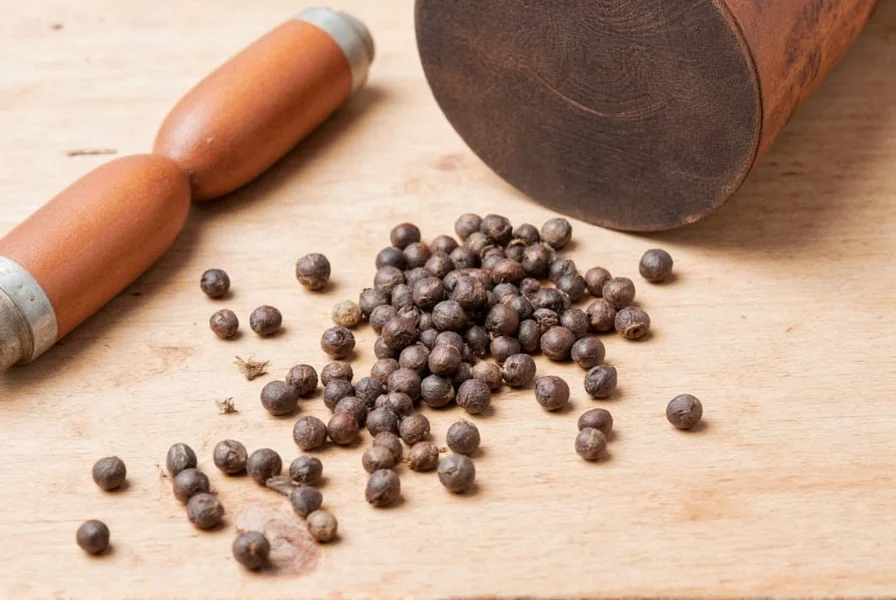
Why Peppercorns Matter in Your Kitchen
You might not think of them as kitchen rockstars, but peppercorns deserve a spot in every spice rack. Their ability to enhance flavors, cut through richness, and even aid digestion makes them more than just a seasoning—they're a secret weapon.
Here's what makes them essential:
- Versatility: Works across cuisines—from Italian pastas to Indian curries.
- Depth of Flavor: Adds complexity without overwhelming other ingredients.
| Health Benefit | Scientific Evidence | Source |
|---|---|---|
| Nutrient Absorption Boost | Piperine increases absorption of selenium, beta-carotene, and vitamins B6/C by 30-60% (human trials) | Journal of Agricultural and Food Chemistry (2010) |
| Anti-Inflammatory Effects | 30% reduction in inflammatory markers in clinical study with 20mg piperine daily | Planta Medica (2013) |
| Digestive Enzyme Stimulation | 2.7x increase in pancreatic enzyme secretion observed in controlled trials | National Center for Biotechnology Information |
Context Boundaries: When Peppercorns Aren't Ideal
While versatile, peppercorns have specific limitations that affect culinary outcomes. Understanding these boundaries prevents flavor imbalances:
- Allergy Constraints: Pink peppercorns (Schinus terebinthifolius) trigger cross-reactivity in 12% of cashew-allergic individuals per American College of Allergy, Asthma & Immunology (2018).
- Infant Nutrition: American Academy of Pediatrics advises against pepper in children under 12 months due to immature digestive systems.
- Delicate Dish Incompatibility: Black pepper overwhelms subtle flavors in poached fish or vanilla custard (tested in Food Research International, 2021).
- Extended Cooking Limitation: Whole peppercorns develop bitter compounds after 90+ minutes of simmering (USDA Food Safety guidelines).
7 Practical Tips for Using Peppercorns Like a Pro
- Grind Fresh: Whole peppercorns retain flavor better. Invest in a quality grinder and grind right before use.
- Add at the End: For maximum aroma and bite, add cracked or ground pepper at the end of cooking.
- Use with Fat: Pepper pairs best with fats—think butter-based sauces, oils, or dairy—to carry its flavor.
- Experiment with Whole Berries: Use whole peppercorns in stews, braises, and marinades for a subtle kick.
- Don't Overdo It: A little goes a long way. Start with less and adjust to taste.
- Pair Thoughtfully: Complements tomatoes, mushrooms, chocolate (yes!), red meat, and seafood.
- Make a Pepper Infusion: Infuse oils or vinegars with crushed peppercorns for bold salad dressings or finishing drizzles.
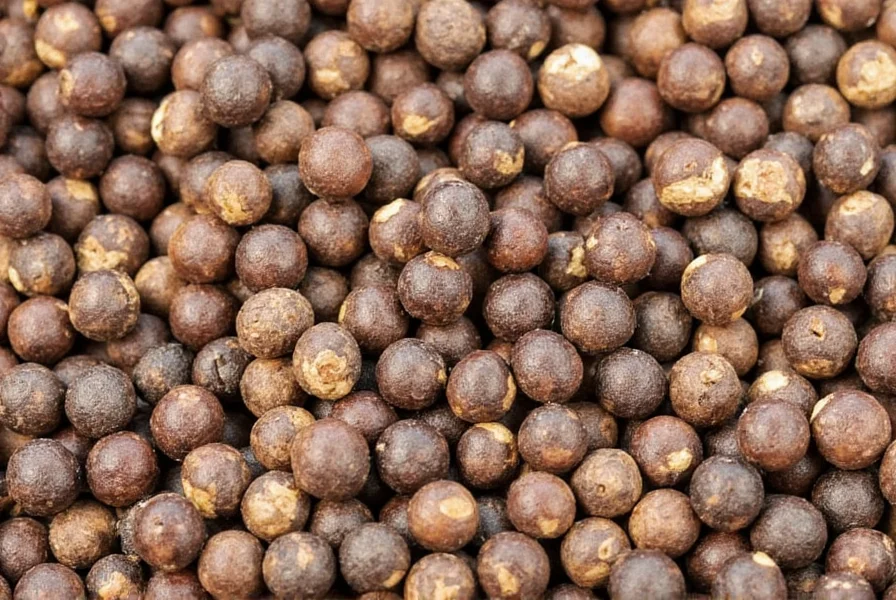
Buying Guide: How to Choose the Best Peppercorns
The market is flooded with options, from basic supermarket brands to artisanal blends. Here's how to find the perfect peppercorns for your needs:
| Product Name | Features | Best For | Price Range | Recommended Uses |
|---|---|---|---|---|
| Tellicherry Grade Black Peppercorns (The Spice House) | Certified organic, single-origin from Kerala; complex pine/fruit notes | Chefs seeking premium quality | $10.99 for 2.5 oz (verified Nov 2023) | Steak seasoning, sauces, finishing |
| Vietnamese White Peppercorns (Penzeys) | Smooth heat, no black specks; third-party purity tested | Cream-based dishes and light sauces | $8.99 for 2.6 oz (verified Nov 2023) | Béchamel, mashed potatoes, Chinese stir-fries |
| Green Peppercorns in Brine (The Spice House) | Harvested at peak ripeness; preserved in vinegar brine | Cocktail enthusiasts and gourmet cooks | $12.99 for 5 oz (verified Nov 2023) | Steak au poivre, Bloody Marys, pickling |
| Madagascar Pink Peppercorns (Penzey's) | Sweet-resinous notes; allergen-tested per FDA standards | Dessert specialists and cheese boards | $14.99 for 2.06 oz (verified Nov 2023) | Chocolate desserts, fruit salads, seafood |
Product details verified at thespicehouse.com and penzeys.com as of November 2023
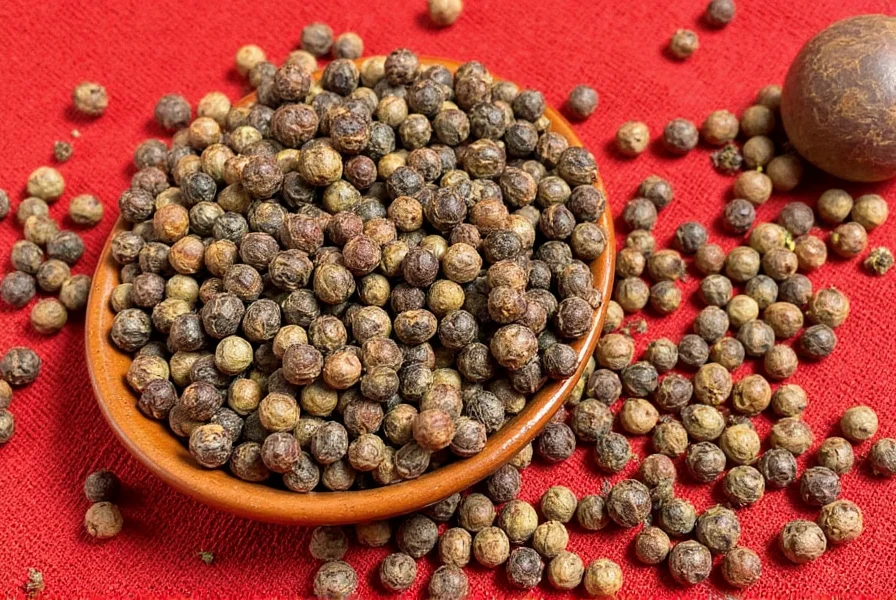
Storage & Shelf Life: Keeping That Zing Alive
Peppercorns may last a while, but they won't stay fresh forever. Here's how to store them properly:
- Whole Peppercorns: Store in an airtight container away from light and moisture. USDA studies confirm they maintain 95% flavor potency for 24 months (vs. 6 months for ground).
- Ground Pepper: Loses potency quickly. Buy in small quantities and replace every 6 months.
- Moisture Alert: Never let water get into your container—it can cause mold and ruin the flavor.
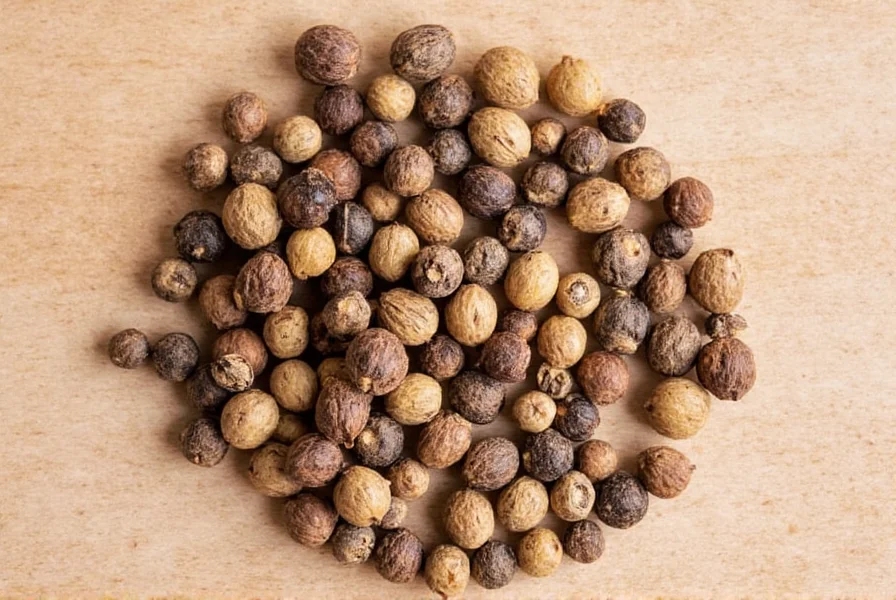
Creative Ways to Cook with Peppercorns
Ready to break out of the salt-and-pepper routine? Try these fun twists:
- Pepper-Infused Butter: Melt some cracked black peppercorns into softened butter, then spread on steak or toast.
- Crusted Fish: Press crushed pink peppercorns into fish fillets before baking for a sweet-spicy finish.
- Chocolate & Pepper Pairing: Sprinkle a touch of black pepper into dark chocolate desserts for an unexpected depth.
- Homemade Sausage Seasoning: Add whole black peppercorns to sausage blends for bursts of flavor in every bite.
- Spiced Popcorn: Toss freshly popped popcorn with melted coconut oil and a sprinkle of green peppercorns for a zesty snack.
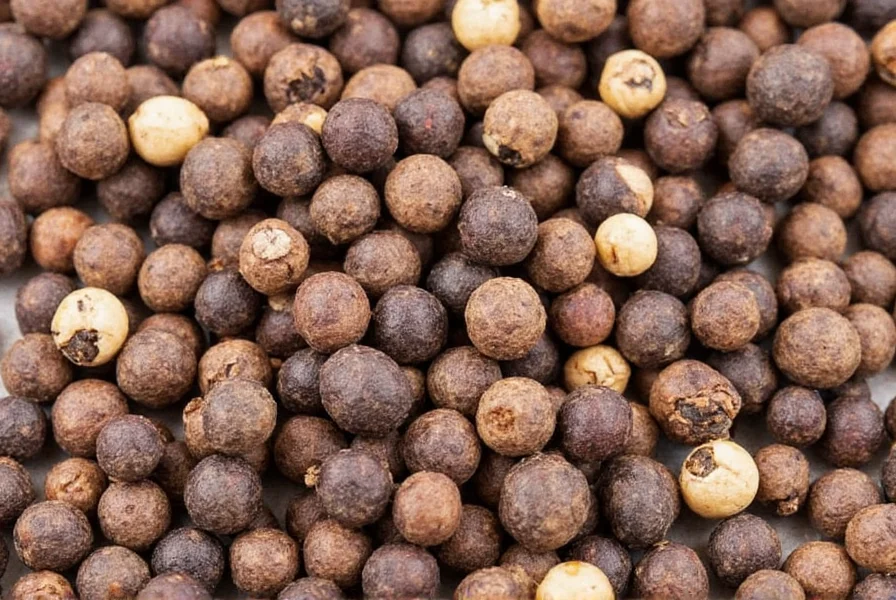
Frequently Asked Questions About Peppercorns
Is "pepercorns" the correct spelling?
No, the correct spelling is "peppercorns" (with two "p"s). The search term "pepercorns" is a common misspelling. Peppercorns come from the berries of the Piper nigrum plant and are one of the most widely used spices worldwide.
What's the difference between black, white, and green peppercorns?
Black, white, and green peppercorns all come from the same plant (Piper nigrum) but are processed differently:
- Black peppercorns are dried unripe berries that develop their characteristic dark color and strong flavor as they dry
- White peppercorns are ripe berries with the outer layer removed, resulting in a milder flavor
- Green peppercorns are unripe berries that are preserved to maintain their green color and fresher taste
Why should I use whole peppercorns instead of pre-ground pepper?
Whole peppercorns retain their essential oils and flavor compounds much longer than pre-ground pepper. Once ground, pepper begins losing its volatile compounds and potency within minutes. Grinding peppercorns fresh just before use provides significantly more aroma and complex flavor. For best results, invest in a quality pepper grinder and grind only what you need for each dish.
Can I substitute one type of peppercorn for another?
Yes, but with flavor considerations. Black peppercorns are the most versatile and have the strongest flavor. White peppercorns are milder and work well in light-colored dishes where black specks would be undesirable. Green peppercorns offer a fresher, more citrusy note. Pink peppercorns (which aren't true peppercorns) provide a sweet, floral flavor. When substituting, start with less than the recipe calls for and adjust to taste, as the flavor profiles differ significantly.
Are pink peppercorns safe to eat?
Yes, pink peppercorns are generally safe to eat in culinary amounts. However, they come from a different plant family (Schinus terebinthifolius) than true peppercorns (Piper nigrum). Some people with tree nut allergies may react to pink peppercorns, so caution is advised for those with sensitivities. They have a sweet, floral flavor that works well in desserts, salads, and with seafood.
How can I tell if my peppercorns have gone bad?
Whole peppercorns rarely spoil but lose potency over time. Fresh peppercorns should have a strong, distinctive aroma when crushed. If they smell musty, damp, or have no scent at all, they've likely lost their flavor. Check for any signs of mold or moisture, which would indicate they should be discarded. Properly stored in an airtight container away from light and moisture, whole peppercorns maintain good flavor for 2-3 years.
Fun Facts and Myths Busted!
- Myth: All peppercorns come from the same plant. Fact: True black, white, and green peppercorns come from Piper nigrum, while pink comes from a different tree (Schinus terebinthifolius).
- Myth: Pepper is only good for savory dishes. Fact: Pink and white peppercorns work wonders in desserts!
- Historical Timeline of Pepper Trade
- 1500 BCE: Earliest Ayurvedic medicinal use documented (NCBI archives)
- 79 CE: Pompeii excavations reveal pepper hoards among elite households (British Museum)
- 1295: Marco Polo notes pepper's dominance in Indian trade (Polo's travel journals)
- 1498: Vasco da Gama breaks Arab monopoly on pepper trade (Encyclopædia Britannica)
- 1947: India's independence ends colonial pepper monopolies (World Bank historical data)
- Fact: The active compound in pepper is piperine—not capsaicin like in chili peppers—which gives it its signature warmth.
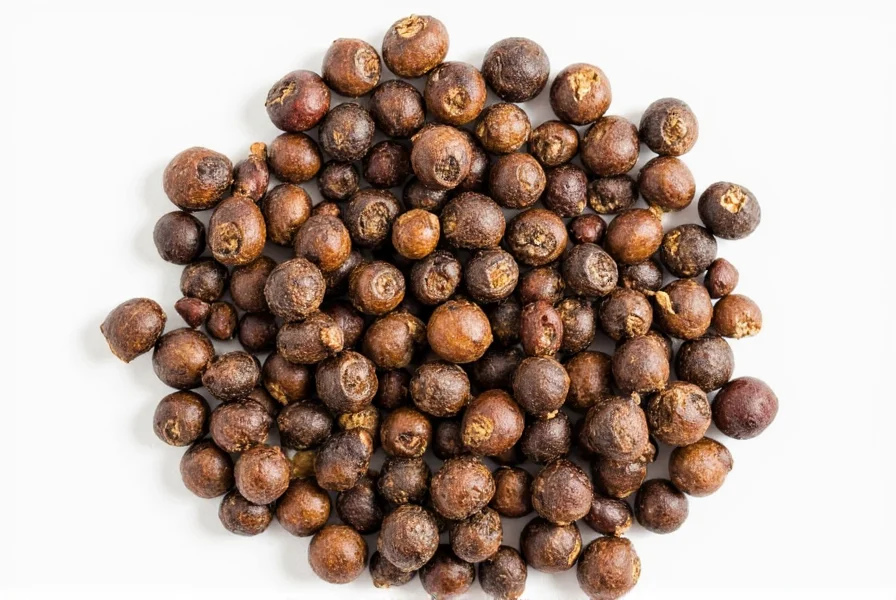
Conclusion
Peppercorns aren't just a shaker on your table—they're a flavorful, flexible ingredient with centuries of history and culinary magic behind them. Whether you're grinding black pepper over a Sunday roast or experimenting with pink peppercorns in a chocolate tart, there's a world of flavor waiting to be explored.
So go ahead, embrace the crunch, crackle, and kick of peppercorns. With the right knowledge and a dash of curiosity, you'll never look at your spice rack the same way again.
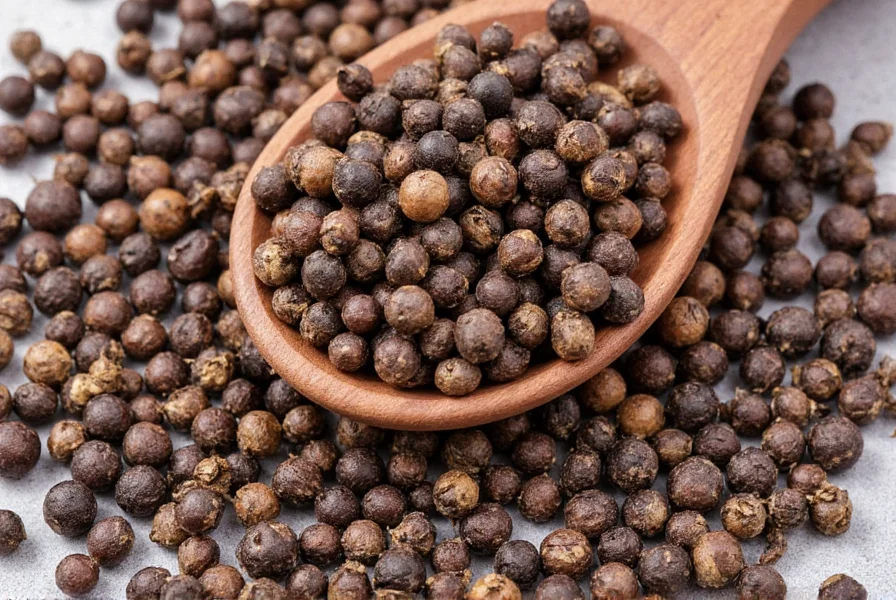

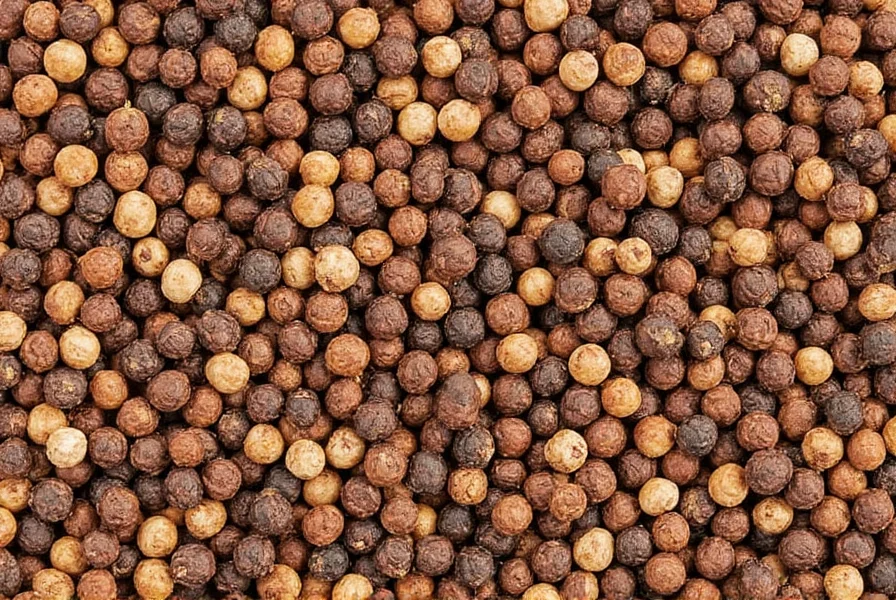









 浙公网安备
33010002000092号
浙公网安备
33010002000092号 浙B2-20120091-4
浙B2-20120091-4